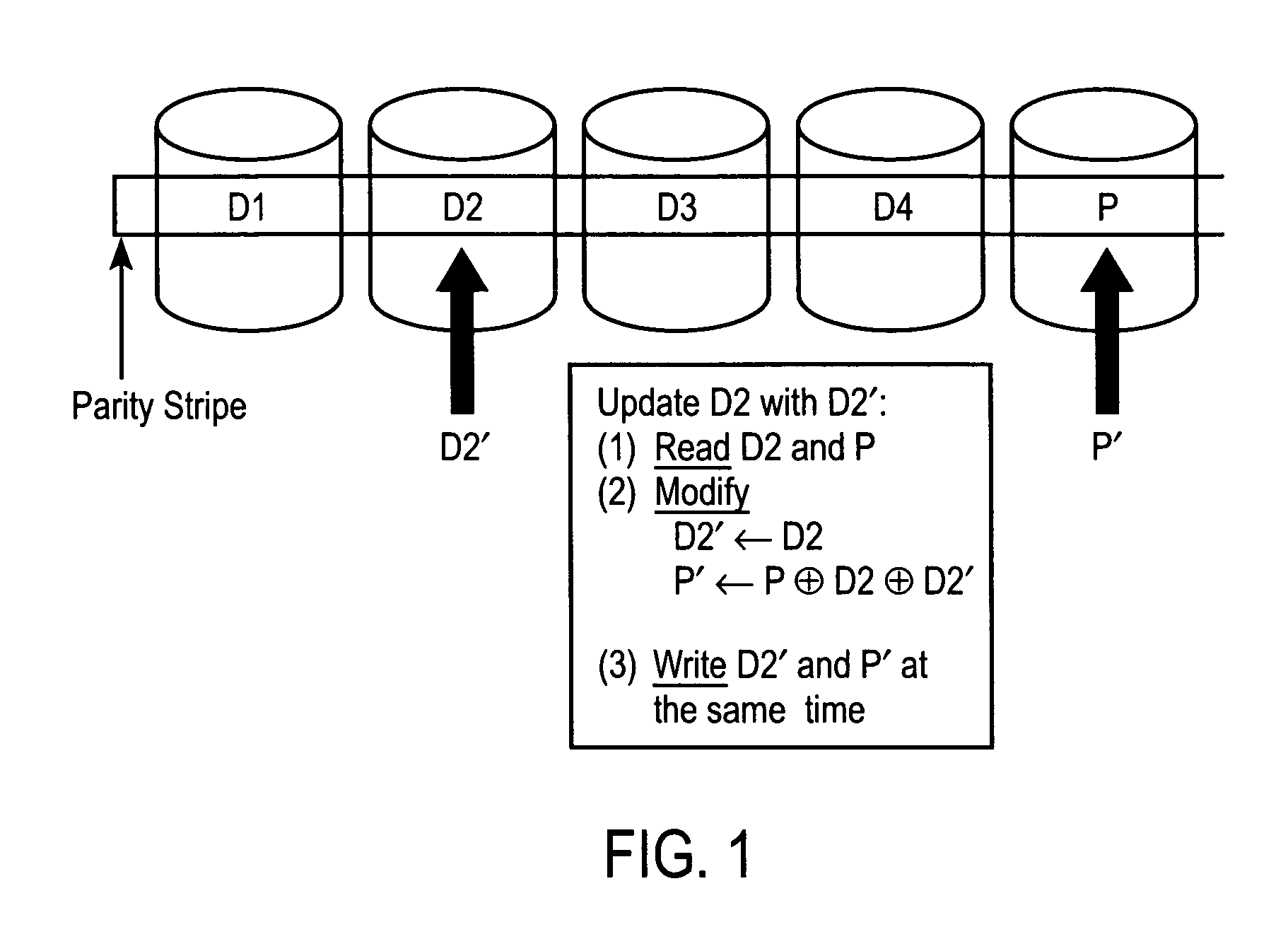High-performance log-structured RAID
a log structure and log structure technology, applied in the field of high-performance log structured raids, to achieve the effect of improving small write performance, facilitating atomic parity updates, and facilitating batching together
- Summary
- Abstract
- Description
- Claims
- Application Information
AI Technical Summary
Benefits of technology
Problems solved by technology
Method used
Image
Examples
Embodiment Construction
Definitions
VDisk
[0049]Virtual disk (volume).[0050]Primary user visible abstraction.[0051]Users can create and destroy virtual disks on demand.[0052]Users can also create snapshots of virtual disks.
Disk (251)[0053]A physical disk.
VAddr[0054]Virtual disk address .
PAddr[0055]Physical disk address .
Sector (241)[0056]A disk sector.[0057]Almost always 512 bytes in size.[0058]Writes to sectors are atomic.[0059]Writes to anything larger than a sector may not be atomic.
Page (231)[0060]Smallest unit of storage allocation / mapping.[0061]Usually somewhere between 32 KB and 1 MB in size.[0062]Consists of whole sectors.
Stripe (221)[0063]A collection of pages over which parity is computed.[0064]For example, a stripe may consist of a page from each of disks A, B & C, with C storing the contents of A xor B.[0065]For reliability, a stripe should consist of no more than one page from each disk.[0066]A stripe may vary in size depending on the amount of data the parity is computed over.
Segment (211)[0067...
PUM
 Login to View More
Login to View More Abstract
Description
Claims
Application Information
 Login to View More
Login to View More - R&D
- Intellectual Property
- Life Sciences
- Materials
- Tech Scout
- Unparalleled Data Quality
- Higher Quality Content
- 60% Fewer Hallucinations
Browse by: Latest US Patents, China's latest patents, Technical Efficacy Thesaurus, Application Domain, Technology Topic, Popular Technical Reports.
© 2025 PatSnap. All rights reserved.Legal|Privacy policy|Modern Slavery Act Transparency Statement|Sitemap|About US| Contact US: help@patsnap.com



